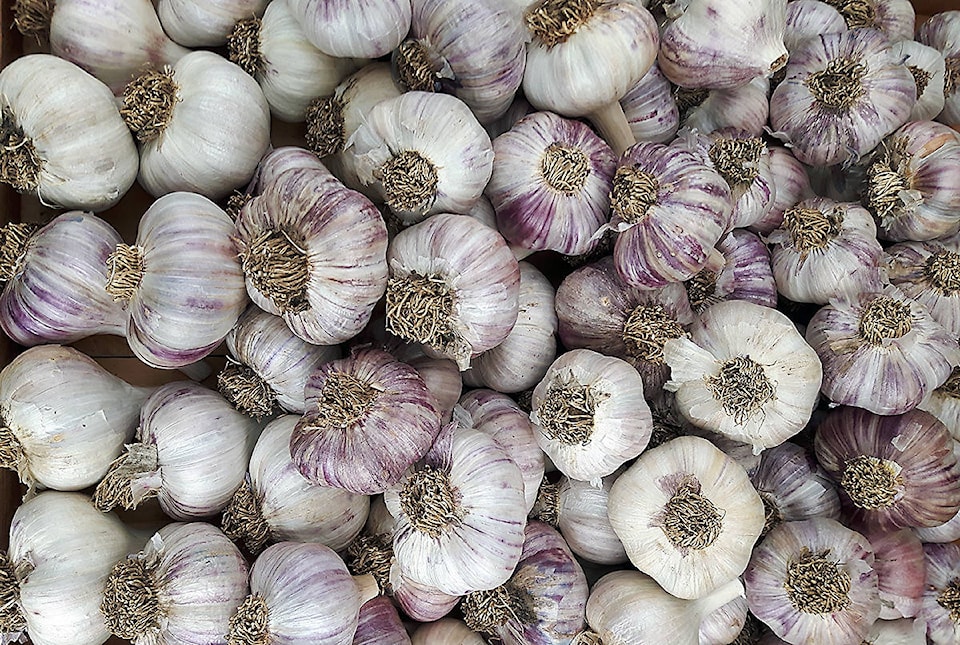Take advantage of warm fall days to get the garden ready for the next growing season.
Plant garlic cloves now until mid-October but time depends on when the ground freezes. To overwinter, the garlic cloves need to put down roots. Do not use the garlic that is available in the grocery store. Purchase what is known as hard neck garlic, called that as there is a hard stem in the middle of the cloves. Hard neck garlic is readily available at farmers markets, local growers, some garden centers and often advertised online.
There are many different varieties of hard neck garlic and each one has a distinctive taste. Local growers are usually very enthusiastic about their garlic and will sell you hardy varieties. If in doubt choose Russian garlic as it is hardy and reliable.
Garlic will grow in any soil that has good drainage. They are a heavy feeder so adding organic matter is a must. Gardeners with a heavy clay soil can amend the soil with organic matter or plant in raised beds.
Before planting, break the individual cloves away from the basal plate, at the bottom of the bulb. The area that is attached to this plate forms the clove’s roots. One of the easiest ways to break or crack hard neck garlic is to hold on to the bottom of the bulb and hit the neck or stem on a hard surface.
To plant dig holes or rows into the soil or if the soil is soft, cloves can be sunk into the soil pointy side up. The top of the clove should be approximately 2 inches (5 cm) from the soil surface. Place cloves 6-8 inches (15-20cm) apart. Once planted, press the soil down firmly. If using a raised bed cover with 3-4 inches (8-10 cm) of organic mulch. The mulch will keep the soil temperature constant regardless of the weather.
Garlic planted? Then it is time to decide Gardeners what needs to be completed in the fall. There are gardeners who cut off all tops and remove all dead material in the fall, those that do nothing, or ones that are between the two extremes.
Removing the tops of dead plants is a must if the plants were infested with insects or diseased. Do not put this material in the compost but dispose of it in the garbage. Leaving infected plant material in place, or placing it in the compost will increase the chance of infection next year.
Leaving healthy plant material in place provides the plants with a thin layer of insulation and some of the material will break down and become part of the soil.
Plant material left intact will provide food and shelter to rodents.
Plant material that stands upright will catch and hold the snow providing the plants with winter protection and moisture in the spring. Seed pods left will feed birds and will look decorative through the snow.
Cleaning the garden in the fall allows the gardener to concentrate on other chores in the spring. In wet years it can be hard to get the dead materials removed before the new growth appears.
There are plusses and minuses to cleaning the flower and shrub beds in the fall. Often the biggest determiner is time and weather.
Linda Tomlinson is a horticulturalist that has garden in central Alberta for over 30 years. She can be reached at your_garden@hotmail.com.
